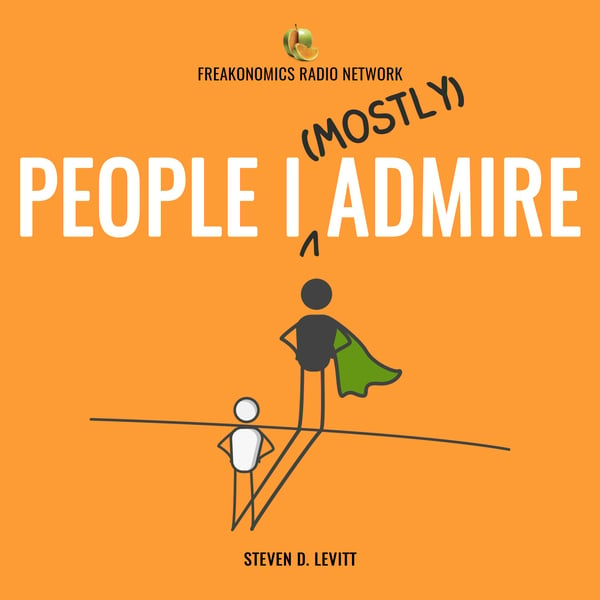159. Robin Wall Kimmerer’s Manifesto for a Gift Economy
People I (Mostly) Admire
Freakonomics Radio + Stitcher
4.6 • 1.9K Ratings
🗓️ 7 June 2025
⏱️ 57 minutes
🧾️ Download transcript
Summary
Transcript
Click on a timestamp to play from that location
| 0:00.0 | My guest today, Robin Wall Kimmer is a botanist who combined scientific methodologies with indigenous practices to study the natural world in a more holistic way. |
| 0:16.2 | She sees the world a bit differently than the typical guest that I have on this show. |
| 0:20.9 | What I marvel at is the economy of nature, where the wealth is diversity, clean water, and birdsong. |
| 0:30.0 | And it's this disconnect between the biophysical laws of how ecosystems work |
| 0:37.6 | and how market economics work. |
| 0:48.8 | Welcome to people I mostly admire with Steve Levitt. |
| 0:58.0 | Robin's book, Braiding Sweetgrass, is one of the best-selling and most influential nonfiction books of the last decade. |
| 1:06.1 | But my favorite ever books, the one that totally enthralled me, is called Gathering Moss, |
| 1:12.2 | a natural and cultural history of mosses. I'm not sure I could even have told you that |
| 1:17.6 | moss was a plant until I read her book. And that's where we started our conversation, |
| 1:22.1 | with my admission of just how ignorant I was when it comes to Moss. |
| 1:34.3 | Music of just how ignorant I was when it comes to Moss. I love that notion that you couldn't even necessarily say what they were. |
| 1:39.7 | People think about them as maybe like green film on a rock or something. |
| 1:45.7 | But yeah, they are the most remarkable and the most ancient of plants on the planet. They were the first |
| 1:52.9 | plants to come out on land. They don't have roots, right? Nor do they have the kind of structures |
| 1:58.6 | that allow plants to grow tall. Their niche is to be |
| 2:03.5 | hardy, survivors, right? They don't have roots. They don't have interior plumbing of xylem and |
| 2:10.1 | flow them. They don't have flowers. And therefore, they don't have stature. Mosses are generally |
| 2:17.2 | under an inch or too tall, |
| 2:19.7 | but that smallness is actually where their power lies |
| 2:25.3 | and why they have persisted for millions and millions of years. |
| 2:30.9 | So mosses were the first plants to grow on land. Does that mean that traditional plants evolved |
... |
Please login to see the full transcript.
Disclaimer: The podcast and artwork embedded on this page are from Freakonomics Radio + Stitcher, and are the property of its owner and not affiliated with or endorsed by Tapesearch.
Generated transcripts are the property of Freakonomics Radio + Stitcher and are distributed freely under the Fair Use doctrine. Transcripts generated by Tapesearch are not guaranteed to be accurate.
Copyright © Tapesearch 2025.

